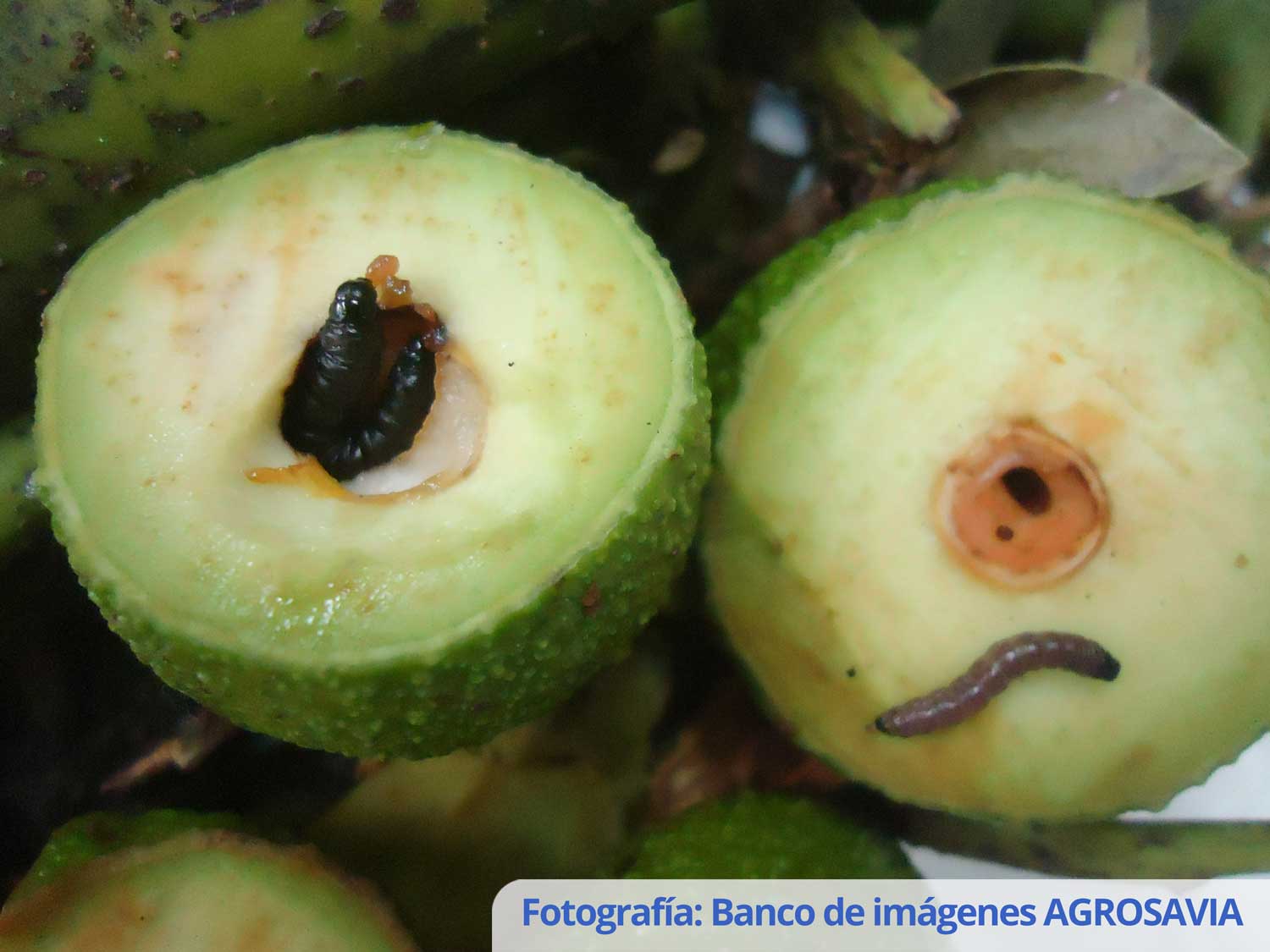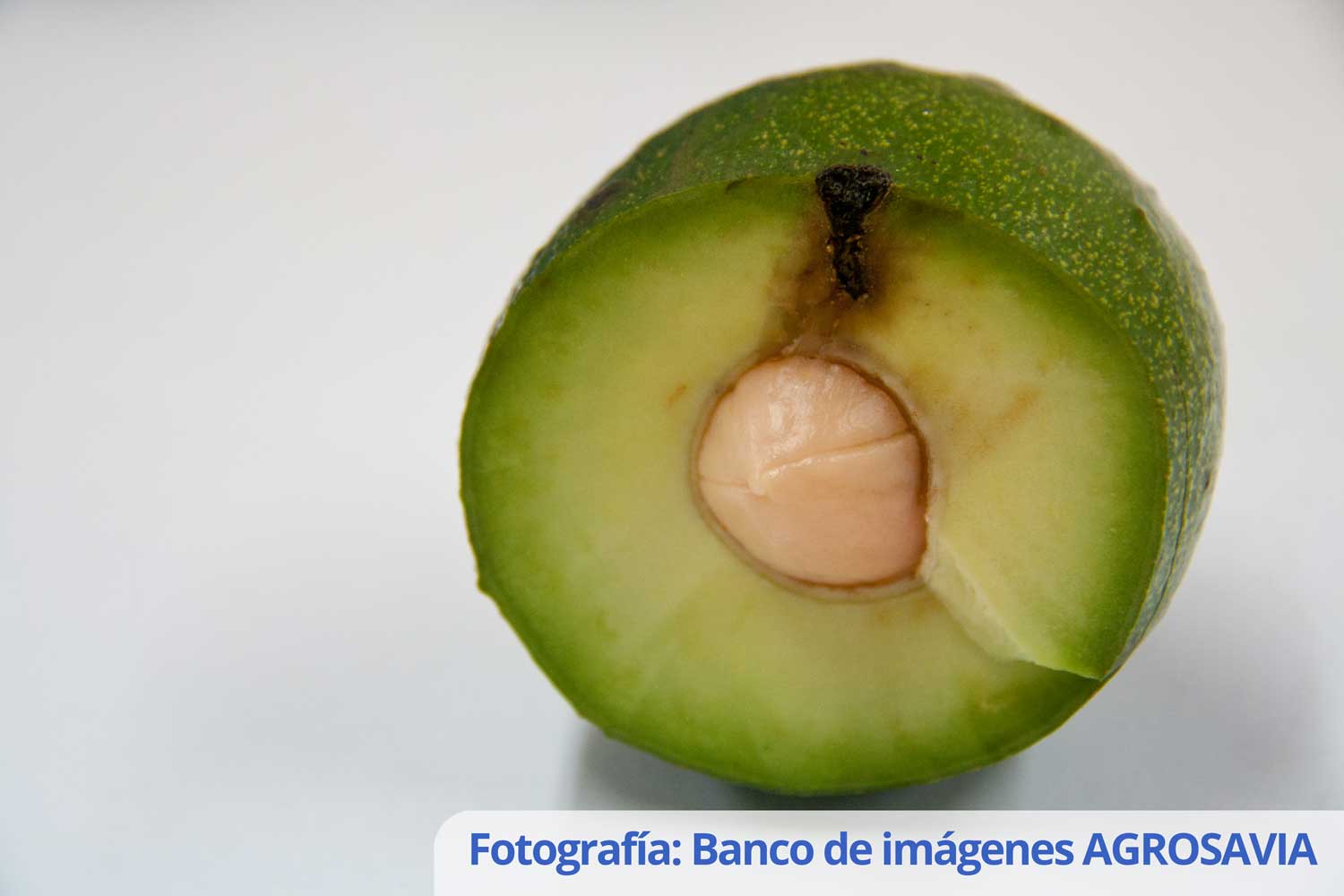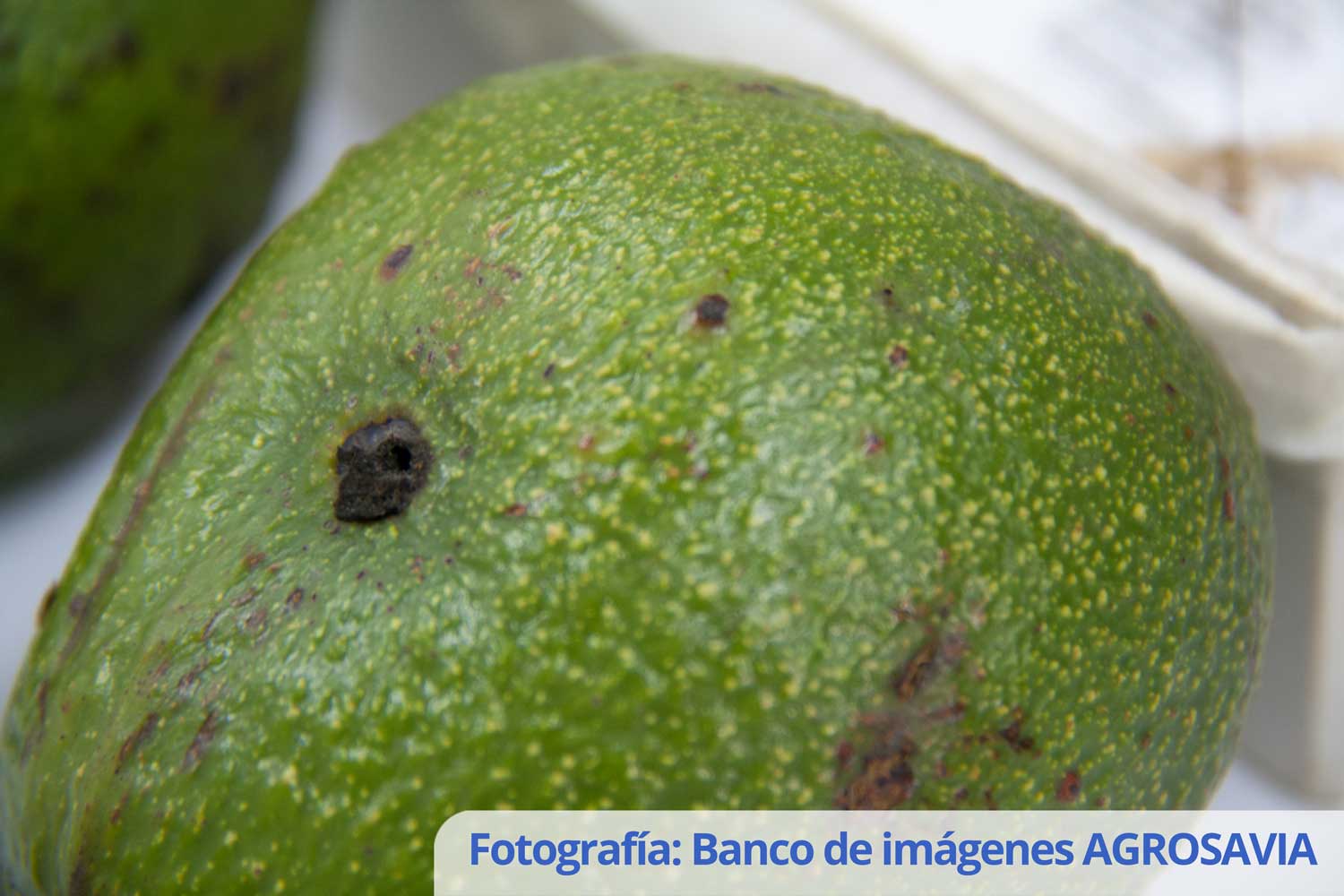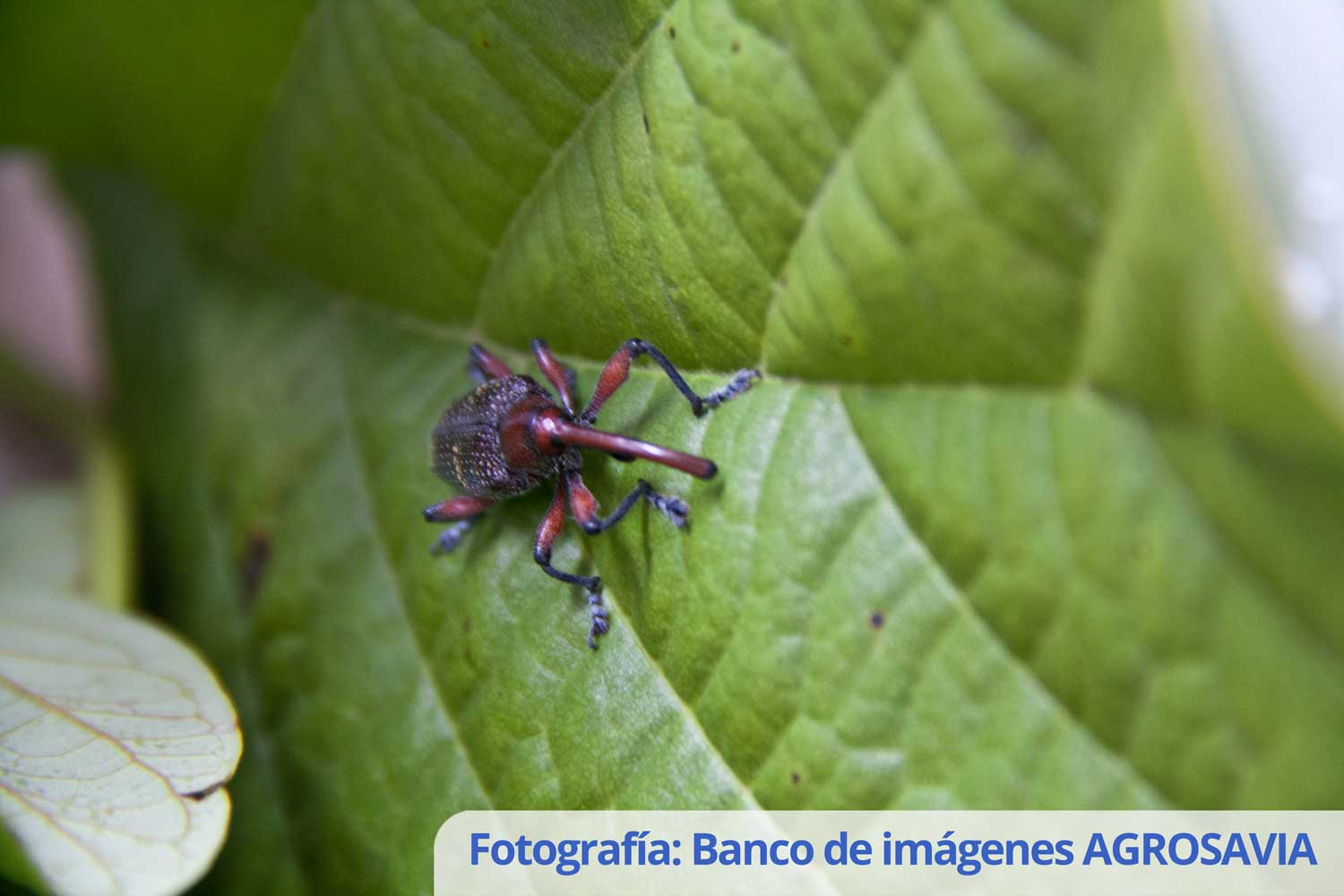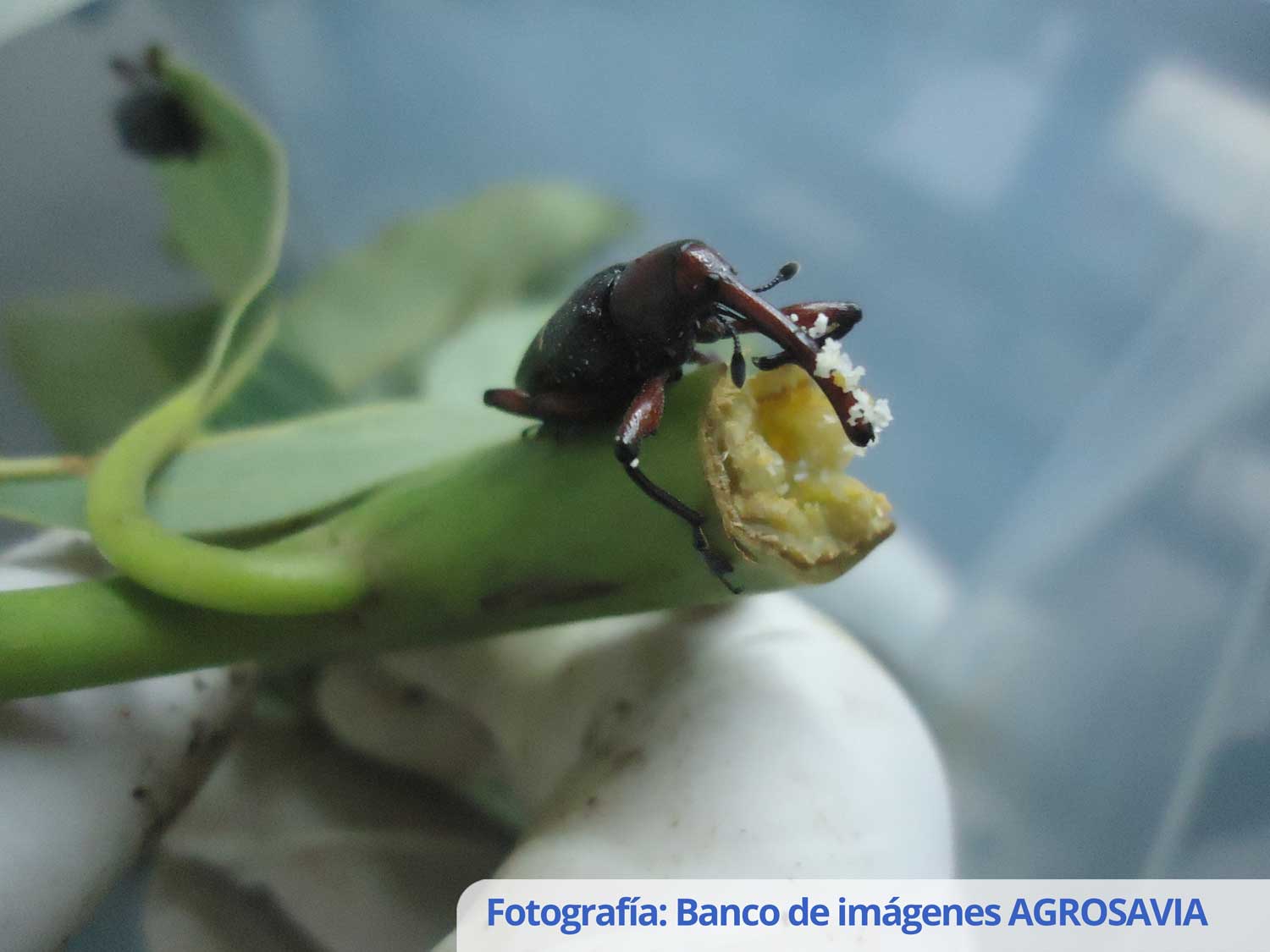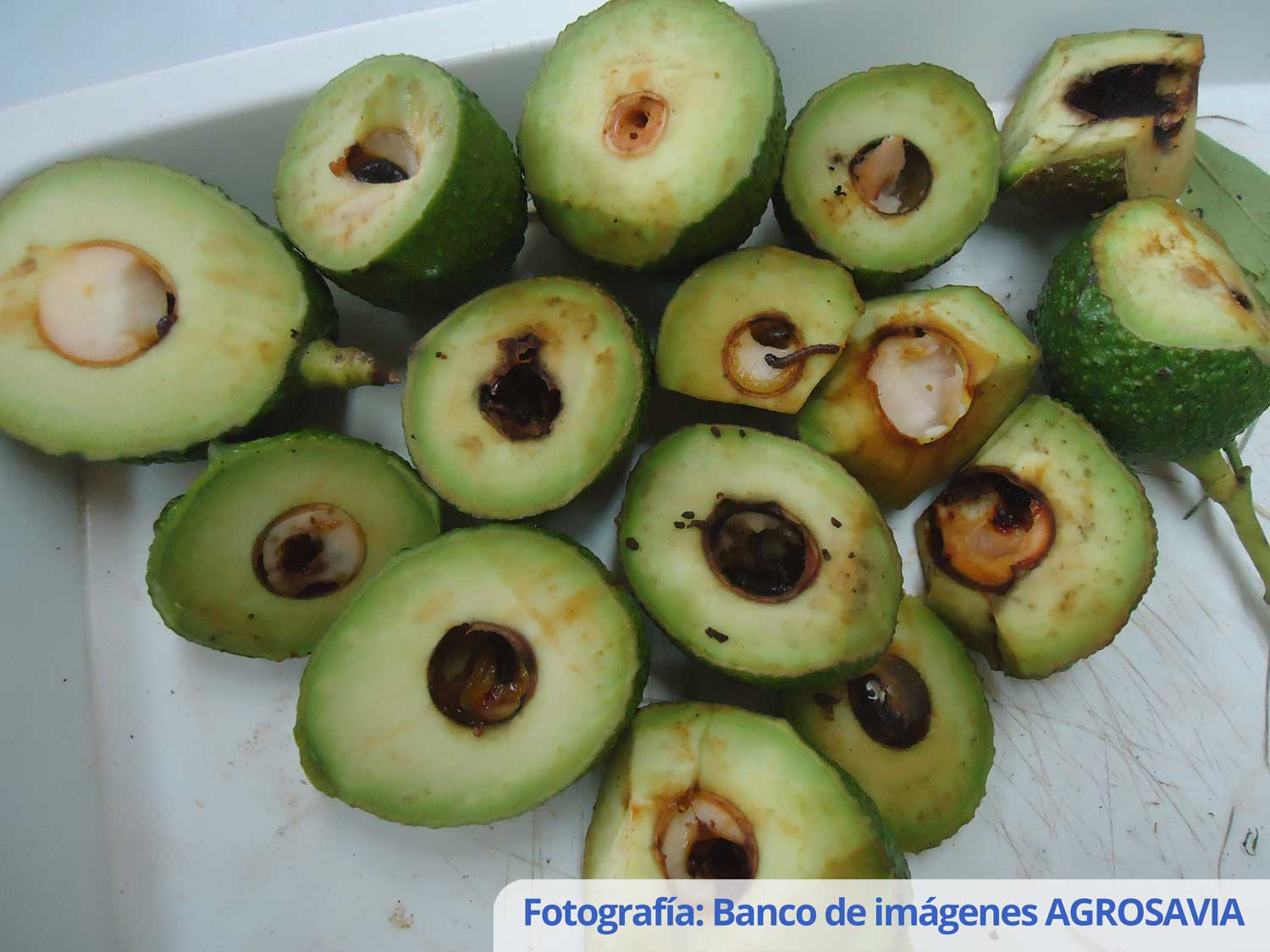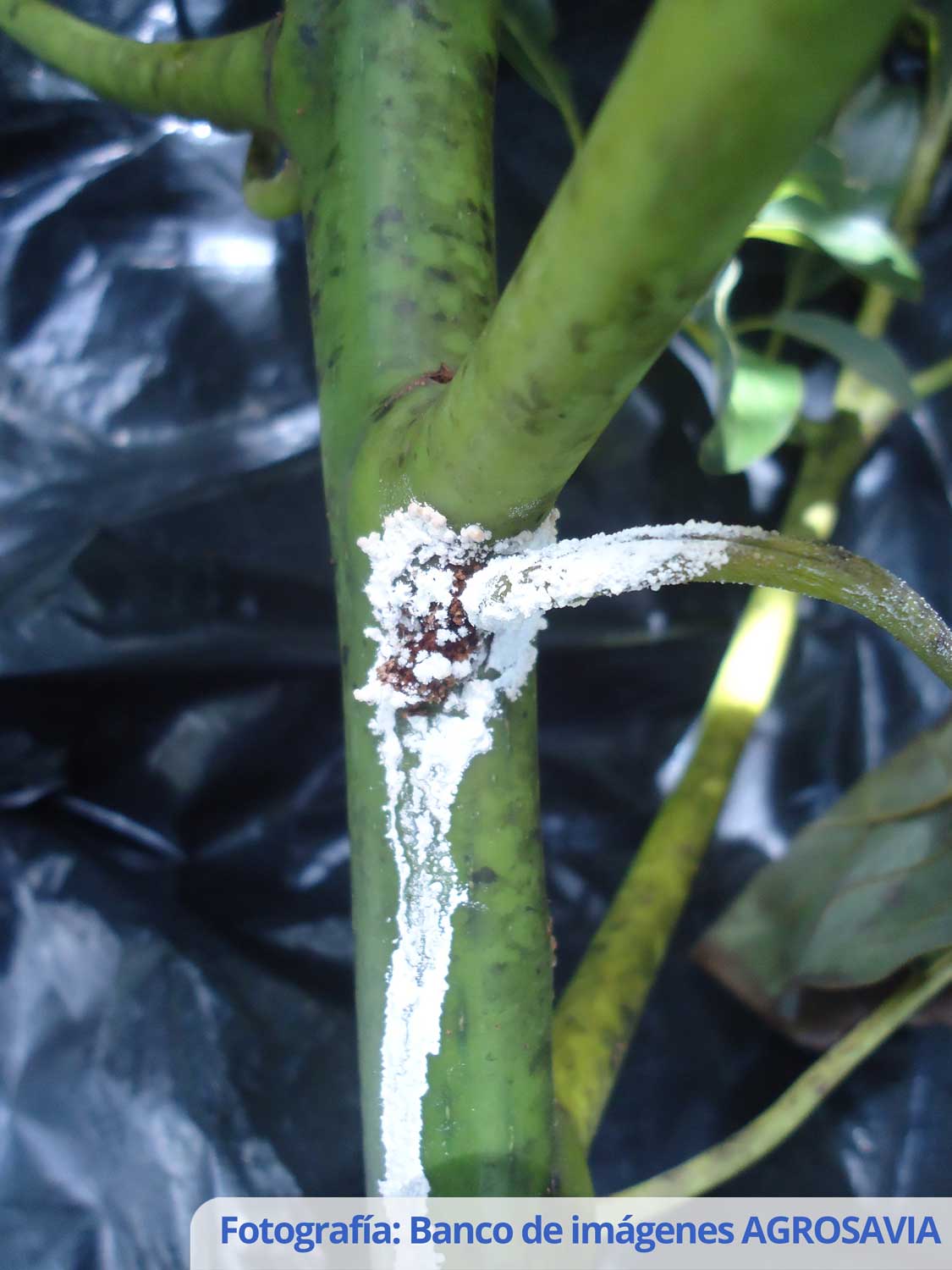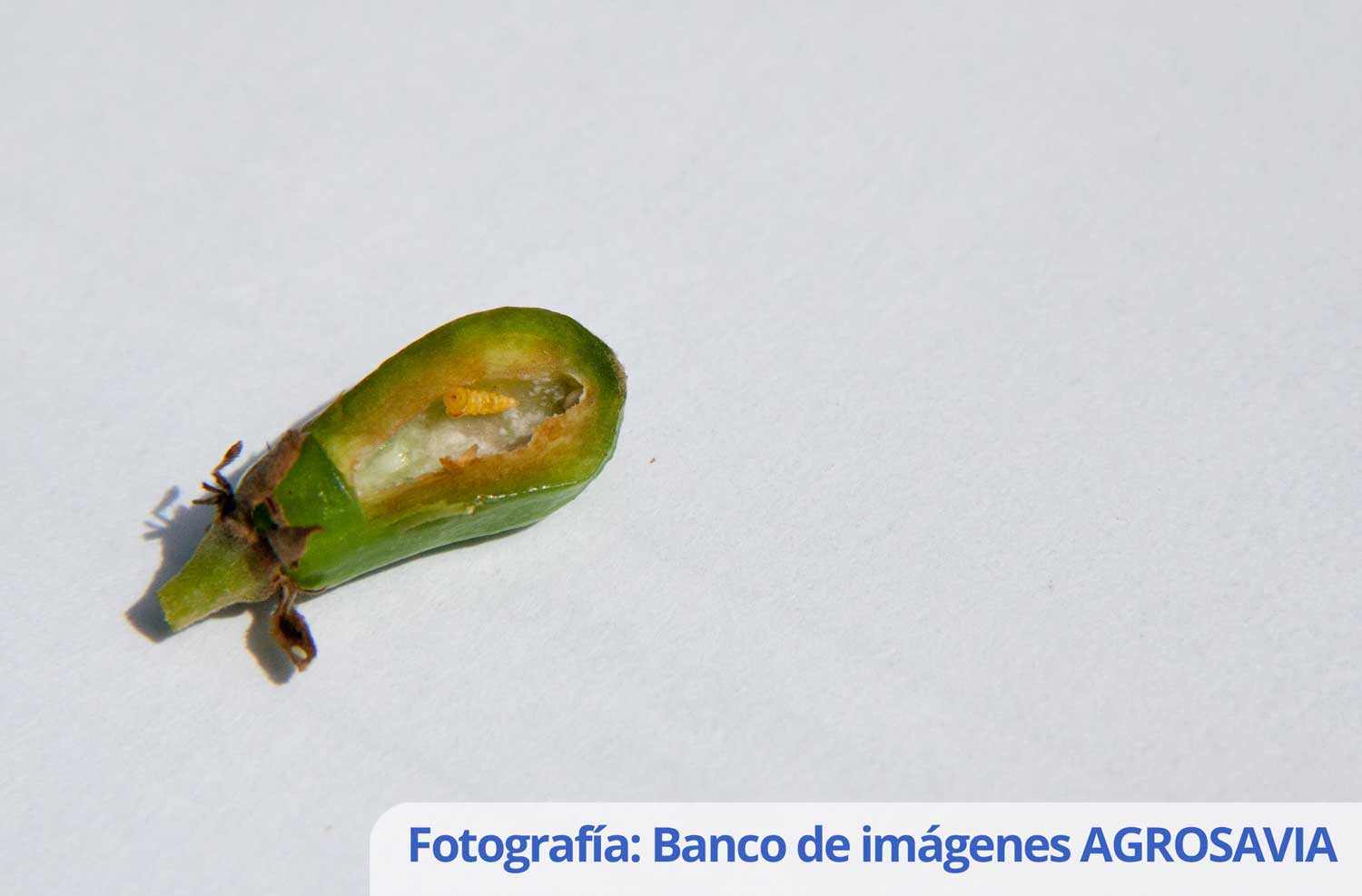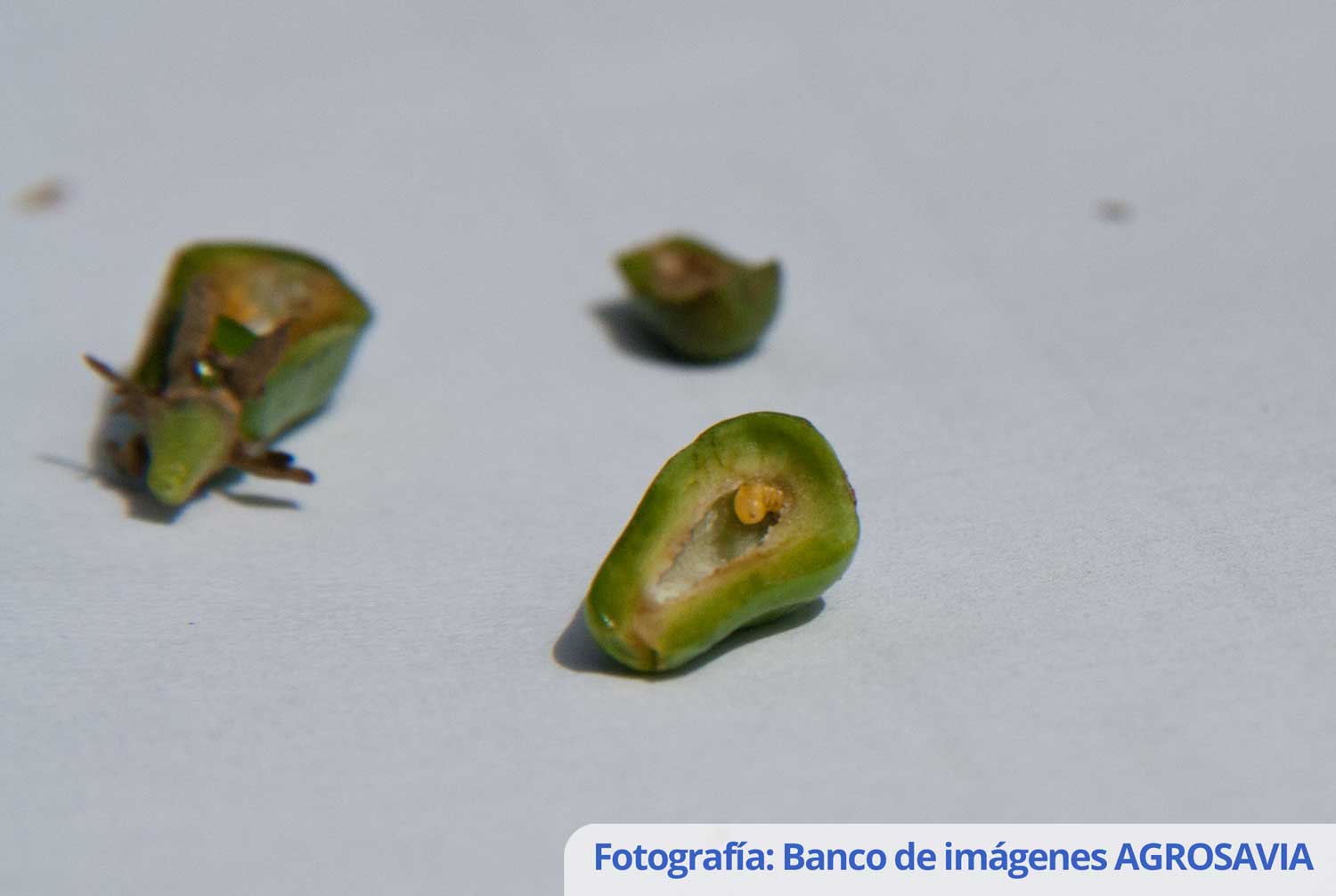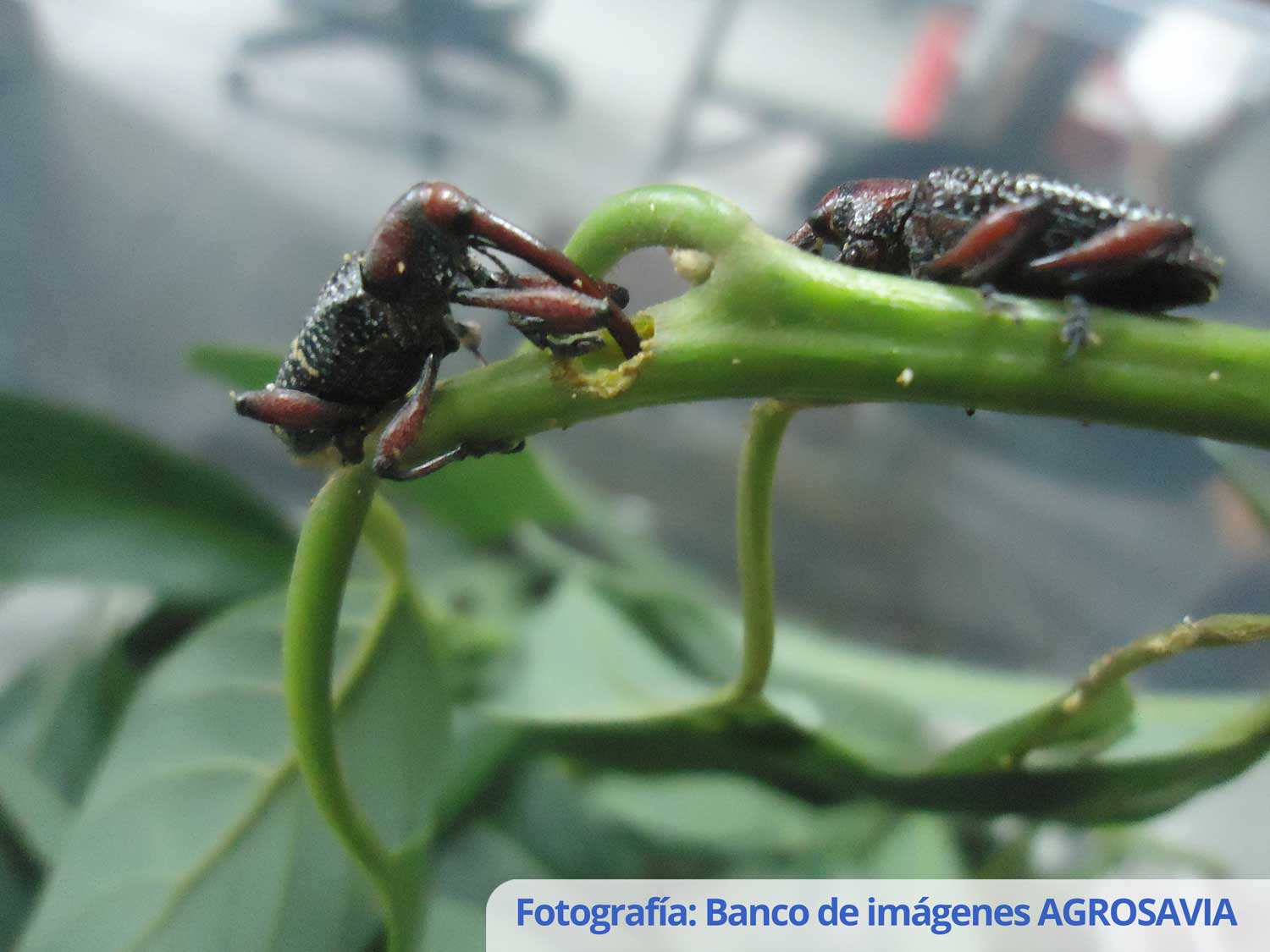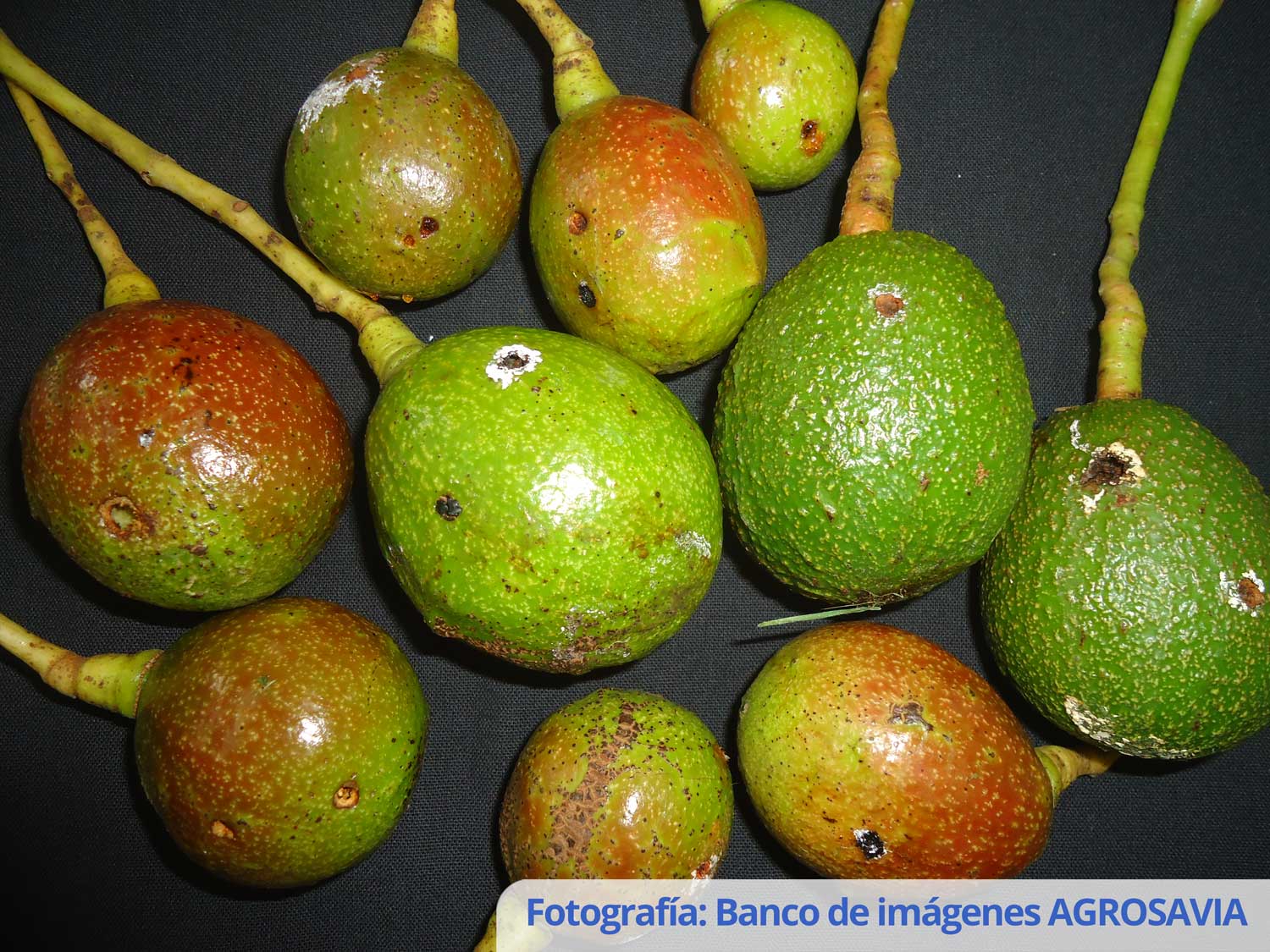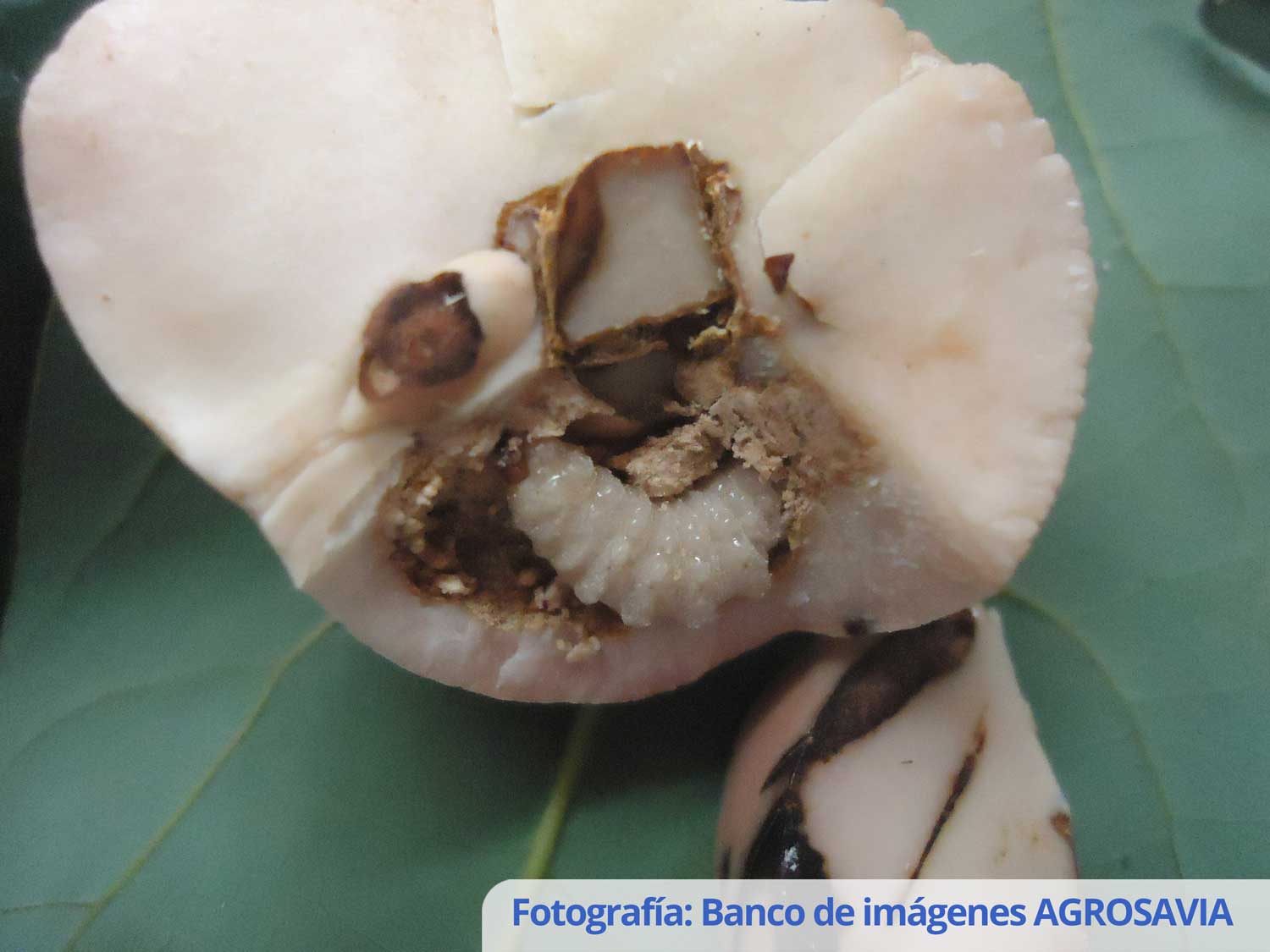Monitoring recommendations for avocado phytosanitary management and surveillance
Persea americana
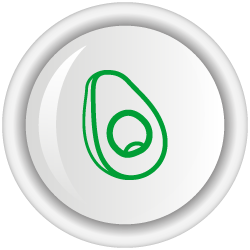
- Thematic area:
- Sanitary and phytosanitary management
- Productive system:
- Avocado
- Geographic coverage:
-
Andean region
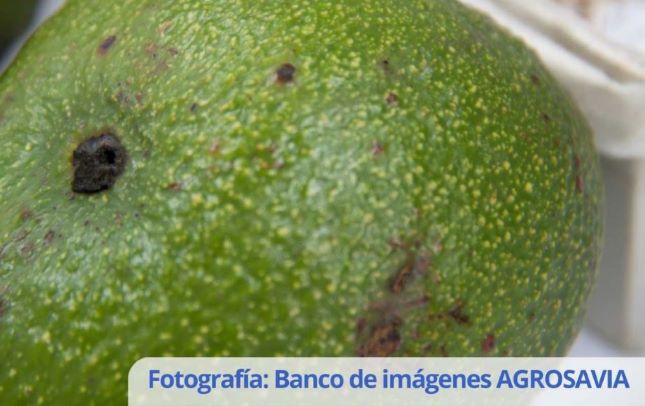
Description
Two monitoring methods are recommended to record damage to fruits and adult populations of the avocado seed moth, Stenoma catenifer, and the weevil Heilipus lauri.
- Direct observation: This method identifies the damage caused to the fruit, and the pests that generate the damage can be recognized. These pests are:
- Heilipus lauri: Identification of circular holes in the fruit where this insect lays its eggs and covers them again with the avocado fruit bark residues.
- Stenoma catenifer:There are two major significant symptoms, and useful in monitoring, produced by the larval stages of the moth. One is when holes are made in the epidermis of the fruit with white secretion, and the second symptom is observable inside the fruit and is produced by the larva. As it grows and feeds, it reaches the seed, producing irregularly shaped galleries and blackish colors on the affected part.
- Pyramidal trap: it is an efficient method for monitoring adults of H. lauri. It consists of two triangular sections of triplex® wood (black color) that form a pyramid shape when superimposed one on the other. Each section is 1 m long x 52 cm at the base and 5 cm at its tip, on which a capture device is embedded. The device is made of synthetic material, measuring at the base 12 cm in diameter by 13 cm in height, and in the upper section, its diameter is reduced to 5 cm. The device has lateral openings lined with plastic mesh, which end in a 3 cm diameter hole, on which a removable transparent plastic container fits, allowing the counting of adults. Additionally, an impregnated dental cotton is deposited inside with 2 cc of avocado extract.
Before installing the trap, it is necessary to identify the sites with the most significant and least presence of damage to "hot spot" fruits and install a trap/site/tree in the places with the highest infestation and a trap/site with less infestation. These should be located 30 cm from the main stem and always at the same cardinal point. These are reviewed weekly to change the extract and record the number of adults captured/trap/week. Controls should be implemented when a site/tree ≥ 1 adult/trap is identified.
The population and damage records will allow the identification and marking of the crop sectors affected by the insect, selecting the sites with the highest concentration of damage or presence of adults, commonly called "foci." In the phenological stages of formation, filling, and development of fruits, it is recommended to monitor all the trees that comprise the "focus" and a sample of 30% of the remaining trees, which will allow the identification of possible changes in higher concentration sites.
For both methods, establishing a direct observation monitoring program with a frequency of ≤ 15 days is suggested, including the periodic review of fruits during each productive cycle.
Implementing the technological offer (TO) has allowed the reduction of up to 50% of fruit losses in harvest and 20% of the number of applications of insecticides used in the control.
This TO is recommended for the departments of Antioquia, Caldas, Tolima, Risaralda, Quindío, Valle del Cauca, and Cauca, in zones with average temperatures between 15-30 ⁰C, precipitation range between 1,400-2,200 mm/year, and relative humidity between 40-85%.
Audiovisual content
Plaga cuarentenaria en aguacate
Associated publications
- Booklet: Prácticas de manejo sostenible para el cultivo de aguacate [Sustainable management practices for avocado cultivation].
- Booklet: Guía para el reconocimiento y manejo de las principales plagas de aguacate cv. Hass en Colombia [Guide for the recognition and management of the main pests of avocado cv. hass in Colombia].
- Manual: Actualización tecnológica y buenas prácticas agrícolas (BPA) en el cultivo de aguacate. AGROSAVIA [Technological update and good agricultural practices (GAP) in avocado cultivation. AGROSAVIA].
- Manual: Barrenador grande de la semilla de aguacate Heilipus lauri. En Actualización tecnológica en el cultivo de aguacate y buenas prácticas agrícolas [Large avocado seed borer Heilipus lauri. In Technological update in avocado cultivation and good agricultural practices].
- Manual: Polilla de la semilla de aguacate Stenoma catenifer. En Actualización tecnológica en el cultivo de aguacate y buenas prácticas agrícolas [Avocado seed moth Stenoma catenifer. In Technological update in avocado cultivation and good agricultural practices].
- Scientific article: Ciclo de vida y descripción morfológica de Heilipus lauri Boheman (Coleoptera: Curculionidae) en Colombia [Life cycle and morphological description of Heilipus lauri Boheman (Coleoptera: Curculionidae) in Colombia].
- Scientific article: Daños ocasionados por el perforador del aguacate Heilipus lauri Boheman (Coleoptera: Curculionidae) en Tolima (Colombia) [Damage caused by the avocado borer Heilipus lauri Boheman (Coleoptera: Curculionidae) in Tolima (Colombia)].
- Scientific article: Biología del pasador del fruto del aguacate stenoma catenifer walsingham (lepidoptera: elachistidae) y búsqueda de sus posibles enemigos naturales [Biology of the avocado fruit moth Stenoma catenifer walsingham (Lepidoptera: elachistidae) and search for its possible natural enemies].
Image Gallery
